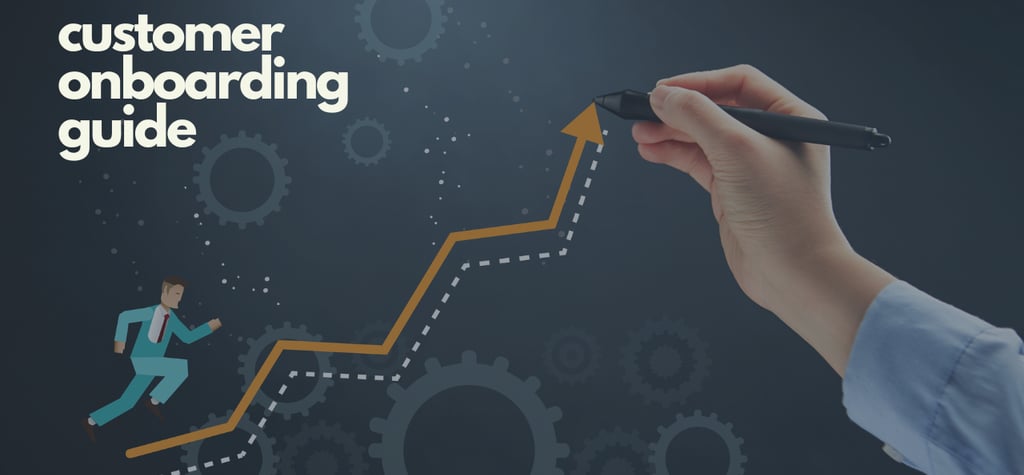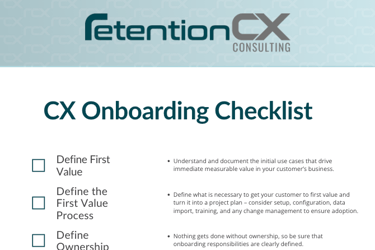B2B Customer Onboarding Guide: Best Practices and Setting the Stage for New Customers
Discover why customer onboarding is crucial for B2B success. Learn best practices, strategies to overcome challenges, and how effective onboarding boosts customer satisfaction, retention, and lifetime value.
CUSTOMER EXPERIENCE
Joseph Loria
8/2/20245 min read


When I think back on my years working with early-stage B2B companies, one thing stands out clearly -
Customer onboarding can make or break your success.
It’s not just a formality; it’s the foundation upon which lasting customer relationships are built.
Today, we’re going to dive into why customer onboarding is so crucial, how it impacts satisfaction and retention, and what you can do to overcome common onboarding challenges.
What is Customer Onboarding?
First, let's get what is not out of the way.
It's not just about setting up accounts or walking customers through features.
Rather, it's about getting integrated into their ecosystem, while integrating them into yours. Giving them confidence and empowering them to use your solution effectively.
Customer onboarding is a process. It's not only how you welcome new clients to your service or product, it's how you ensure they get value from it as quickly as possible through a well-structured onboarding program.
Successful onboarding involves a series of steps that might include training sessions, personalized support, and ongoing engagement to ensure the customer can maximize the product's benefits.
Onboarding new customers should be unique to your product or service, and set up in a way that understands your customer needs and reduces their time to value (TTV).
Why is Customer Onboarding Important?
Effective customer onboarding is critical for several reasons.
First, it sets the tone for the entire relationship, underscoring the importance of good customer engagement from the start.
A positive onboarding experience can lead to higher customer satisfaction, increased retention rates, and stronger loyalty.
On the other side, a poor onboarding experience can result in early churn, as customers may feel neglected or overwhelmed.
Onboarding is your first real opportunity to prove to your customers that choosing your product was the right decision. It’s about delivering quick wins that showcase the value of your solution, which is vital for maintaining momentum and ensuring long-term success.
Impact of Effective Onboarding on Customer Satisfaction and Retention
Let’s talk numbers:
86% of customers say they will remain loyal if onboarding and continuous education are provided (UserPilot)
74% of potential customers will switch to other solutions if the onboarding process is complicated (UserPilot)
63% of customers consider the company's onboarding program when making a purchasing decision (UserGuiding)
82% of enterprise organizations rate their onboarding strategy as a key driver of value (HubSpot)
Reports continue to show that customers who have a smooth onboarding experience are more likely to stick around.
Why? Because they start seeing value right away.
When customers feel supported and see the benefits of your product early on, their satisfaction skyrockets. And satisfied customers are loyal customers.
Think of onboarding as tuning a high-performance sports car – the finer the adjustments and care (onboarding experience), the better the performance and reliability (customer loyalty).
Challenges in New Customer Onboarding
But let's be real. Onboarding isn't always smooth sailing.
From unclear processes to lack of communication, there are numerous hurdles that can trip you up.
For instance, I’ve seen companies struggle with aligning their onboarding process with customer expectations, leading to frustration on both ends.
Then there’s the challenge of scalability – what works for your first ten customers might not for the next hundred.
Strategies to Overcome Onboarding Challenges
So, how do we navigate these waters?
First, clarity is key.
Define your onboarding process clearly and stick to it. Make sure your team is on the same page and that your customers know what to expect.
Second, leverage technology. Part of the onboarding experience should leverage tools that can automate repetitive tasks and provide consistent experiences.
Third, personalize the experience. Each customer is unique, and your onboarding should reflect that. A tailored approach can make customers feel valued and understood.
What are some Customer Onboarding Best Practices?
Clarity and Communication: Ensure that your onboarding process is clearly defined and communicated to your customers. They should know what to expect and when.
Personalization: Tailor the onboarding experience to meet the specific needs of each customer, so that every customer feels valued. This can involve personalized training sessions or customized support resources.
Use of Technology: Leverage onboarding tools and platforms to automate repetitive tasks and provide a consistent experience. These tools can also help track progress and identify areas where customers may need additional support.
Engagement: Maintain regular contact with customers throughout the onboarding process. This can include scheduled check-ins, feedback surveys, and proactive outreach to address any issues.
Documentation and Resources: Provide easy access to comprehensive documentation, tutorials, and support resources. Or even an internal and external onboarding checklist can be helpful.
How to Create a Customer Onboarding Strategy?
Creating an effective customer onboarding strategy involves several key steps:
Define Your Goals: Start by identifying what you want to achieve with your onboarding process. This could include reducing time to value, increasing customer satisfaction, or minimizing customer churn rates.
Identify First Value: You cannot deliver all of your value to your customer right away. However, you can define the first value your service will deliver. The time to this initial value should be measured in weeks, not months, allowing your customers to quickly experience tangible benefits from their purchase.
Map the Customer Journey: Outline the steps your customers will go through from the moment they sign up to becoming fully proficient with your product. Identify key touchpoints and milestones to help your customer along the way.
Develop Onboarding Materials: Create resources such as welcome emails, customer onboarding templates, training videos, user guides, and FAQ sections. These materials should be easily accessible and designed to address common questions and challenges.
Assign Responsibilities: Ensure that your team knows their roles and responsibilities within the onboarding process. This might involve customer success teams, managers, support staff, and product experts working together to deliver a seamless experience.
Implement and Iterate: Launch your onboarding strategy and continuously gather feedback from customers. Use this feedback to refine and improve your process over time, ensuring it remains effective and relevant.
How Does Customer Onboarding Contribute to Customer Lifetime Value?
Customer onboarding is a crucial driver of customer lifetime value (CLV).
By ensuring that customers are successful and satisfied from the start, you increase the likelihood that they will continue to use your product and expand their engagement over time, leading to higher customer retention.
Effective onboarding helps new customers achieve their goals faster, leading to higher satisfaction and loyalty. This, in turn, translates into longer retention periods and more opportunities for upselling and cross-selling.
Ultimately, a well-executed onboarding process can significantly enhance the overall value each customer brings to your business.
Why a Well-Structured Customer Onboarding Process is Essential
A well-structured onboarding process isn’t just nice to have – it’s essential.
It sets the tone for the entire customer relationship and customer experience. When done right, it shows your new customers that you are organized, reliable, and dedicated to their success.
It’s like setting a strong foundation for a building – without it, everything else is at risk.
Conclusion
To wrap it all up, effective customer onboarding is the bedrock of customer satisfaction and retention.
By addressing challenges head-on and implementing strategic solutions, you can ensure this stage of the customer journey starts on the right foot.
Now is the time to review your onboarding process. Is it as smooth and effective as it could be?
If not, it's time to make some changes.


Download the full Customer Onboarding Checklist now and make a great first impression every time!

